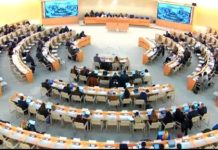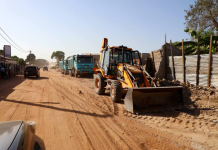By: Kebba AF Touray
The Monetary Policy Committee (MPC) of the Central Bank of the Gambia, yesterday November 29th 2018, met the Press to explain the situation and state of the Gambian economy.
The Governor of The Central Bank Bakary Jammeh, said Gambia Bureau of Statistics estimated that real Gross Domestic Product (GDP), grew by 4.6 percent in 2017, higher than 0.4 percent in 2016; that such growth is expected to remain robust in 2018 with a positive long term outlook, due to continues implementation of sound macroeconomic policies and structural reforms.
“Economic recovery in the Gambia continues to gather strength, as evidenced by the sound rebound in tourism, construction activities, finance and insurance, trade and telecommunications,” he said.
Jammeh said the current account deficit is estimated to have widen to US$55.58 million in 2018, from a deficit of US$28.11 million a year ago, whereas the account balance for services rose to a surplus of US$52.23 million (43.50 percent) in 2018, from US$36.40 million during the same year; that transfer rose to US$136.68 million or 20.46 percent.
Jammeh continued that deficit in goods account widened to US$252.64 million (16.47 percent) in 2018, from US$205.51 million in the corresponding period of 2017, due to increase in imports; that surplus and financial account improved to US$40.15 million in 2018, from a deficit of US$13.55 million in the same year.
Governor Jammeh highlighted that the stock of domestic debt increased slightly to D29.66 billion (42.7 percent) in 2018, from D29.14 billion (42.0 percent of GDP) in the corresponding period a year ago; that Treasury and Sukuk Al Salaam bills increased by 0.96 percent to D17.14 billion during the year under review.
Jammeh averred that the Banking sector remains sound, highly capitalized, liquid and profitable and has registered an asset growth of 15.8 percent in 2018; that the non-performing loan ratio stood at 4.7 percent, lower than 5.9 percent reported at the previous MPCs, and 10.2 percent in the same period last year.
He said food inflation decelerated to 6.5 percent in 2018 from 7.9 percent last year, with a marginal increase in non-food inflation attributed largely to the rise in price indices of housing, fuel and lighting, hotels and restaurants, transportation, health, furniture and education.
“Inflation outlook further decelerated towards the Bank’s medium term target of 5 percent, premised on a stable exchange rate of the dalasi; that pressures from global food prices remains mild and monetary and fiscal policies remains prudent. Jammeh said risks to outlook comprises acceleration in global inflation, increase in interest rates in advanced economies, strong US dollar in the international market, and increase in domestic energy prices, may affect inflation expectation.
See subsequent editions for report on the question and answer session with the media.






















